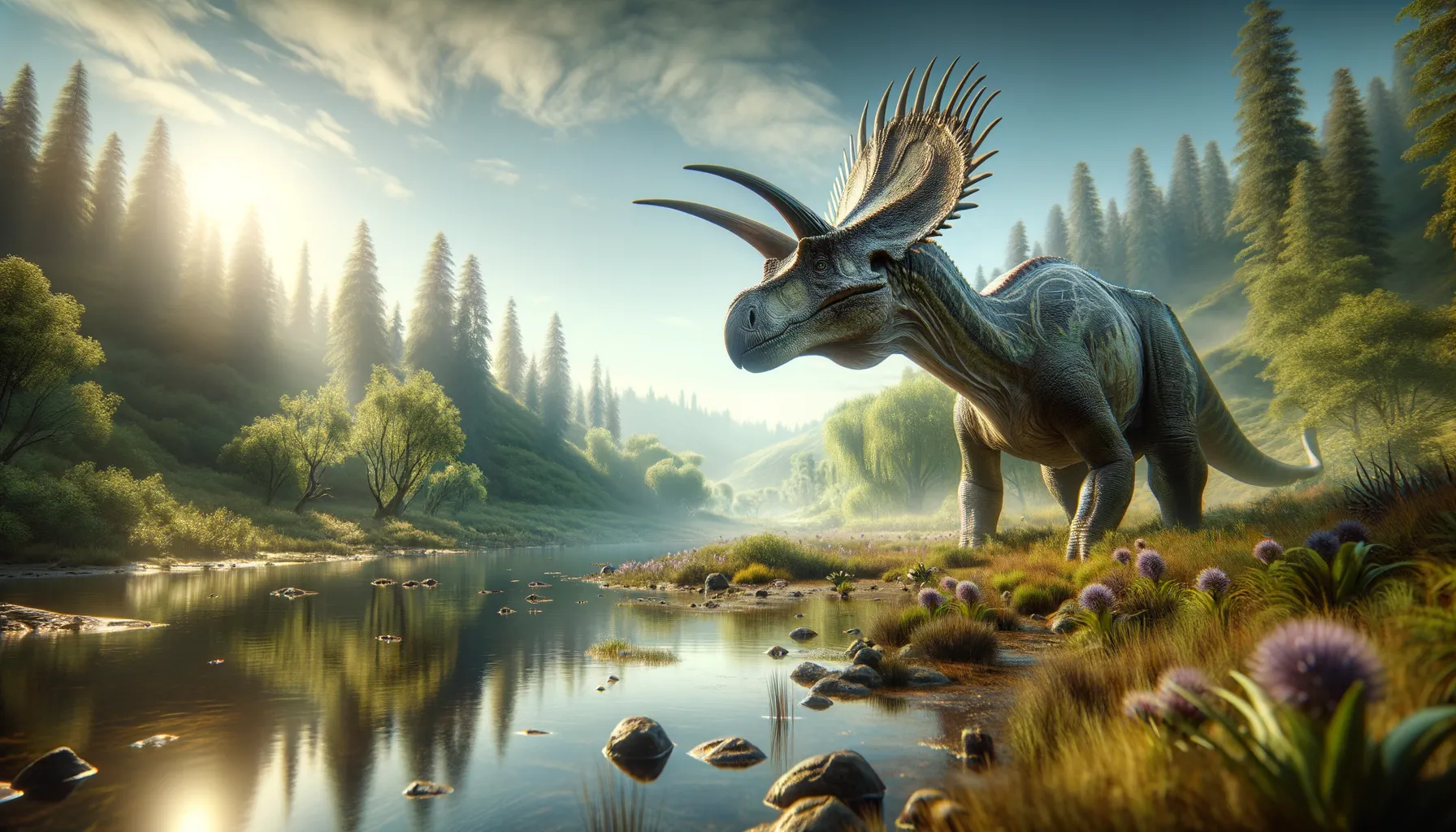
Saurolophus
Crested giants of the ancient world.
Period
Cretaceous
Length
About 10 to 12 meters from head to tail.
Height
Approximately 4 meters tall at the hips.
Weight
Around 2 to 3 metric tonnes.
Saurolophus, a notable hadrosaurid, roamed the Earth during the Late Cretaceous period. Recognized by its prominent cranial crest, which may have been used for communication, Saurolophus was a herbivorous dinosaur. Its fossil evidence suggests it lived in large herds, likely roaming the floodplains and forests of what we now call North America and Asia.
Diet
Saurolophus was a herbivore, primarily feeding on plants. It likely consumed conifers, ferns, and flowering plants that were abundant in its environment.
Hunting
As a herbivore, Saurolophus did not hunt for food. It grazed on vegetation, using its beak to clip plants.
Environmental challenges
Saurolophus lived in environments prone to changes in climate and vegetation. It faced challenges like finding enough food during drier periods. Predators like large theropods also posed a constant threat. Adaptations in herd behavior likely helped mitigate these challenges.
Speed
Moderate, could likely outrun most predators.
Lifespan
Estimated between 60 to 80 years.
First discovery
Discovered in 1912 in Alberta, Canada.
Fun Facts
- Saurolophus was a large duck-billed dinosaur that lived around 70 million years ago during the Late Cretaceous period.
- It is known for having a distinctive crest on top of its head, which scientists believe might have been used for communication or display.
- Saurolophus was herbivorous, meaning it only ate plants, and had hundreds of teeth for grinding up tough vegetation.
- Fossils of Saurolophus have been found in both North America and Asia, making it one of the few dinosaurs known from multiple continents.
- The name 'Saurolophus' translates to 'lizard crest', highlighting its unique head decoration.
- Saurolophus could grow up to 40 feet long, which is roughly the size of a city bus!
- Some scientists think that Saurolophus might have traveled in herds, similar to how some herbivorous animals do today.
Growth and Development
Saurolophus experienced a growth spurt from juvenile to adult stages. This rapid growth was critical for survival, helping them reach sizes less vulnerable to predators. Their development included changes in the crest size and shape, possibly playing roles in social interaction.
Habitat
Saurolophus inhabited areas rich with rivers and lush vegetation. These floodplain regions provided both food and water. Seasonal changes may have forced migrations in search of resources. Fossil evidence suggests they thrived in wide, open spaces with plenty of room for large herds.
Interaction with other species
Saurolophus likely maintained a peaceful coexistence with other herbivorous dinosaurs. Its herd lifestyle meant interactions were primarily within its own species. However, competing for resources occasionally led to encounters with other large herbivores. Predatory threats from theropods shaped its alert and social behaviors.
Natural lifespan
The natural lifespan of Saurolophus is estimated to have been around 60 to 80 years.
Reproduction
Saurolophus likely reproduced by laying eggs in nests constructed from vegetation and soil. Parental care was probably limited, as observed in many dinosaurs. The young, once hatched, were left to grow within the safe haven of the herd. Mating and nesting strategies might have been influenced by the region's climate and food resources.
Social behaviour
Saurolophus exhibited strong social behaviors, often found in large herds. This social structure offered protection against predators and facilitated resource location. Communication possibly involved vocalizations and visual displays, aided by its distinctive crest. Social hierarchies within herds could have influenced access to food and mating opportunities.
Fossil locations
Saurolophus fossils have been found primarily in North America and Asia. Notable sites include Alberta, Canada, and parts of Mongolia. These discoveries have provided insights into its geographical range and habitat preferences. Fossilized remains, including bones and teeth, offer clues about its lifestyle and environmental adaptations.
